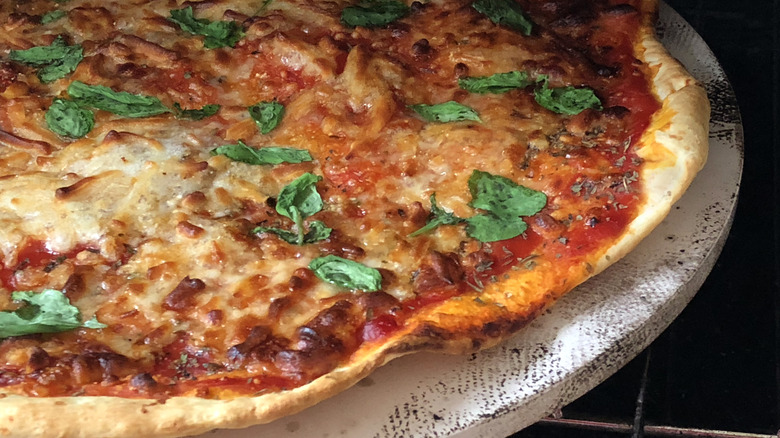The Baking Mistake You Need To Avoid With Frozen Pizza
A pizza stone is a pizza lover's best friend. This ceramic round that absorbs and retains high temperature heat, allowing you to bake your homemade pizza directly on it, is the key to getting a perfectly chewy and crispy crust. But when it comes to your favorite make-at-home DiGiorno, Tombstone, Tostino's, or California Pizza Kitchen frozen pizzas, do not remove them from their packaging and place them onto a hot pizza stone to bake or you may wind up an unhappy and hungry individual.
The problem with frozen pizzas is they can cause your pizza stone to crack or shatter due to what is known as thermal shock. This is when your pizza stone is placed in an extreme temperature rather than being allowed to gradually warm up or cool down. When freezing cold pizza hits a piping hot, porous, and delicate cooking tool like a pizza stone, there is a very sudden change in temperature that causes internal stress. This is what could potentially cause it to experience some type of fracture or breakage.
The solution
So, how do you get a great tasting frozen pizza if you can't use the pizza stone? You can always bake it on a baking sheet or directly on the racks in your oven. These options are you safest bet if you don't want to tempt fate. However, they are not the only solution. You could try this clever trick that will take your frozen pizza to the next level: Defrost your frozen pizza. This may be easier said than done, because it does require some planning and the beauty of frozen pizza is you don't have or want to plan.
That said, the crust is the foundation. Get it right and everything is smooth sailing from there. A pizza stone helps do that by baking your pizza from the bottom, up. That warm stone slab ensures your pizza crust cooks just right. By defrosting it, you decrease the possibility of thermal shock for your pizza stone, but you also give the once frozen crust a fighting chance of having all the qualities in a pizza crust you know and love.

